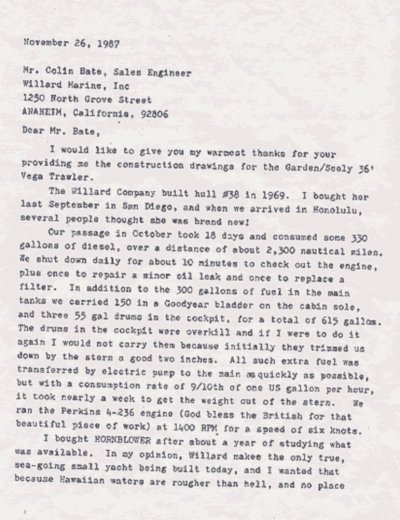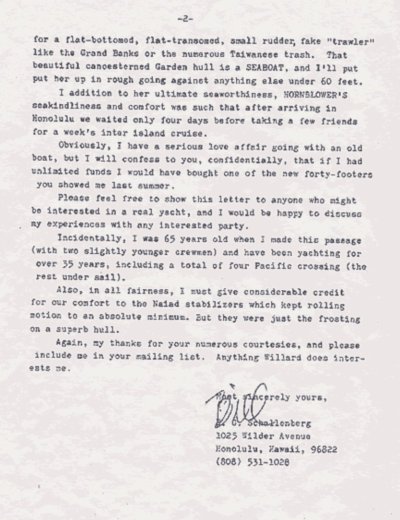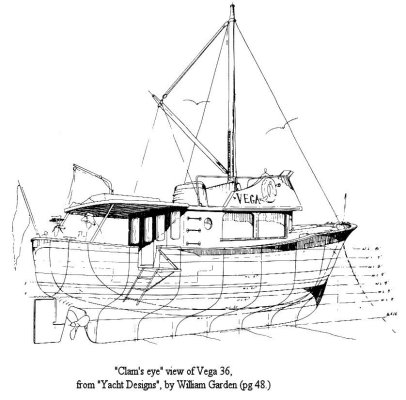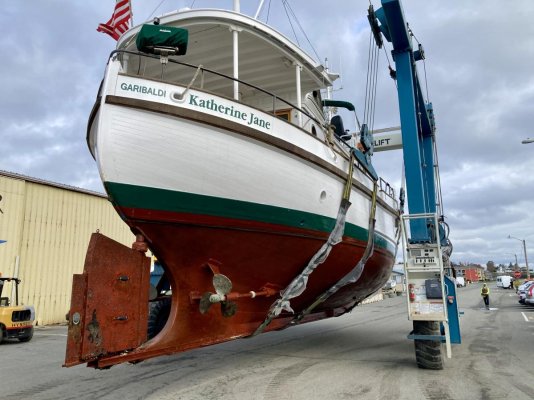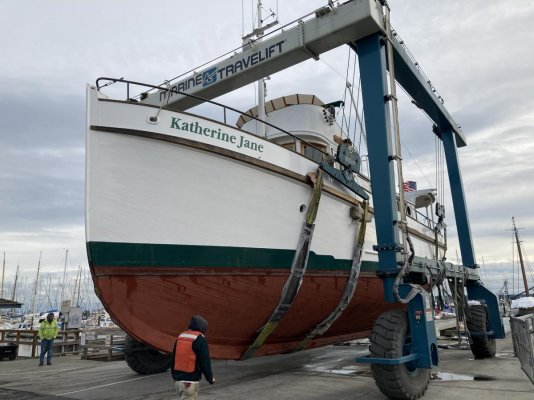mvweebles
Guru
- Joined
- Mar 21, 2019
- Messages
- 7,797
- Location
- United States
- Vessel Name
- Weebles
- Vessel Make
- 1970 Willard 36 Trawler
A bit of passagemaking history: I recently traded notes with the current owner of 1969 Willard 36 Hull #38 (my 1970 W36 Sedan is #40, the last W36 built), a Pilothouse version of the Wm Garden hull adapted by Blaine Seeley. Before the N46 was even conceived, this boat went from San Diego to Honolulu, a distance of 2300 nms and burned 330 gallons of diesel during the 18-day passage. Interestingly, the PH version of the W36 carried 300 gals vs 500 gals for the sedans. He was worried about fuel and carried 150 gals in a bladder, and another 165 gals in three 55-gal drums on the aft deck, carrying a total of 615 gals. Presumably, he chose October as a known seasonal weather window.
The then-new owner of the 18-year old vessel "Hornblower" wrote Willard Marine a letter documenting the trip which is attached as JPGs. The author/owner makes an inelegant effort to distinguish Willard from the Taiwan trawler-crowd. He describes being 65-years old at the time, and ran the 75hp Perkins 4.236 at 1450 RPM, shutting down for 10-mins each day for a complete engine check.
Here is a 2013 YouTube video from a broker when the boat was for sale.
As Co-Moderator of Willard Boat Owners for the past 20+ years, we have some amazing archives. Not only was Willard the very first passage-capable production Trawler, but it spawned the first users-group forerunner to TrawlerForum. In the 1960s, the owner of Hull #4 ("Linco"), an attorney out of the Portland OR area, distributed mimeographed newsletters of the various comings and goings of owners. W36's ventured as far as Panama Canal transits, and to the Galapagos Islands. This we well prior to affordable radar and navigation electronics. Even VHF radios would be of marginal use as there would be no one within range. These were hearty souls.
At any rate, Willard Boat Owners group is open to all interested people. Our email traffic is pretty light - a handful of posts a month. But it's a great resource for Willard Owners or wannabees - Willards often show up here before hitting the general market. Willards are not for every taste - they are not fancy boats and skew heavily towards utility and efficiency. There are 1000s of adjectives applicable to a Willard before you hit "opulent." But if you're interested, feel free to join.
main groups.io Group
Also, one of our members (and co-Moderator) maintains a decent site on the history and various models of Willards. He tries to keep the for-sale section up to date too.
Willard Owners Group | world's first fiberglass production trawlers
Best to all, and thanks for letting me brag-on Willards.
Peter
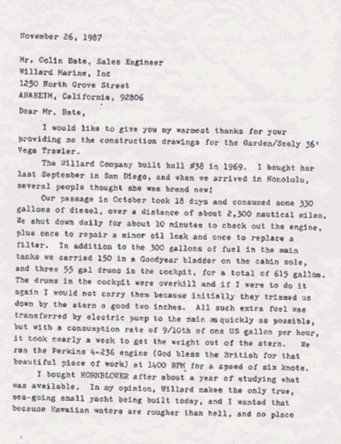
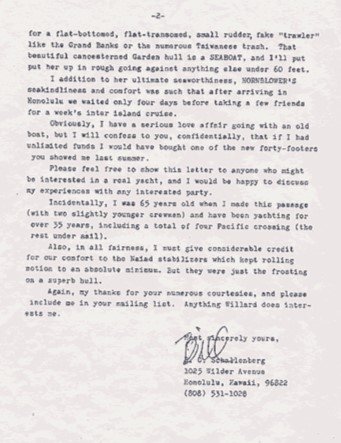
The then-new owner of the 18-year old vessel "Hornblower" wrote Willard Marine a letter documenting the trip which is attached as JPGs. The author/owner makes an inelegant effort to distinguish Willard from the Taiwan trawler-crowd. He describes being 65-years old at the time, and ran the 75hp Perkins 4.236 at 1450 RPM, shutting down for 10-mins each day for a complete engine check.
Here is a 2013 YouTube video from a broker when the boat was for sale.
As Co-Moderator of Willard Boat Owners for the past 20+ years, we have some amazing archives. Not only was Willard the very first passage-capable production Trawler, but it spawned the first users-group forerunner to TrawlerForum. In the 1960s, the owner of Hull #4 ("Linco"), an attorney out of the Portland OR area, distributed mimeographed newsletters of the various comings and goings of owners. W36's ventured as far as Panama Canal transits, and to the Galapagos Islands. This we well prior to affordable radar and navigation electronics. Even VHF radios would be of marginal use as there would be no one within range. These were hearty souls.
At any rate, Willard Boat Owners group is open to all interested people. Our email traffic is pretty light - a handful of posts a month. But it's a great resource for Willard Owners or wannabees - Willards often show up here before hitting the general market. Willards are not for every taste - they are not fancy boats and skew heavily towards utility and efficiency. There are 1000s of adjectives applicable to a Willard before you hit "opulent." But if you're interested, feel free to join.
main groups.io Group
Also, one of our members (and co-Moderator) maintains a decent site on the history and various models of Willards. He tries to keep the for-sale section up to date too.
Willard Owners Group | world's first fiberglass production trawlers
Best to all, and thanks for letting me brag-on Willards.
Peter



